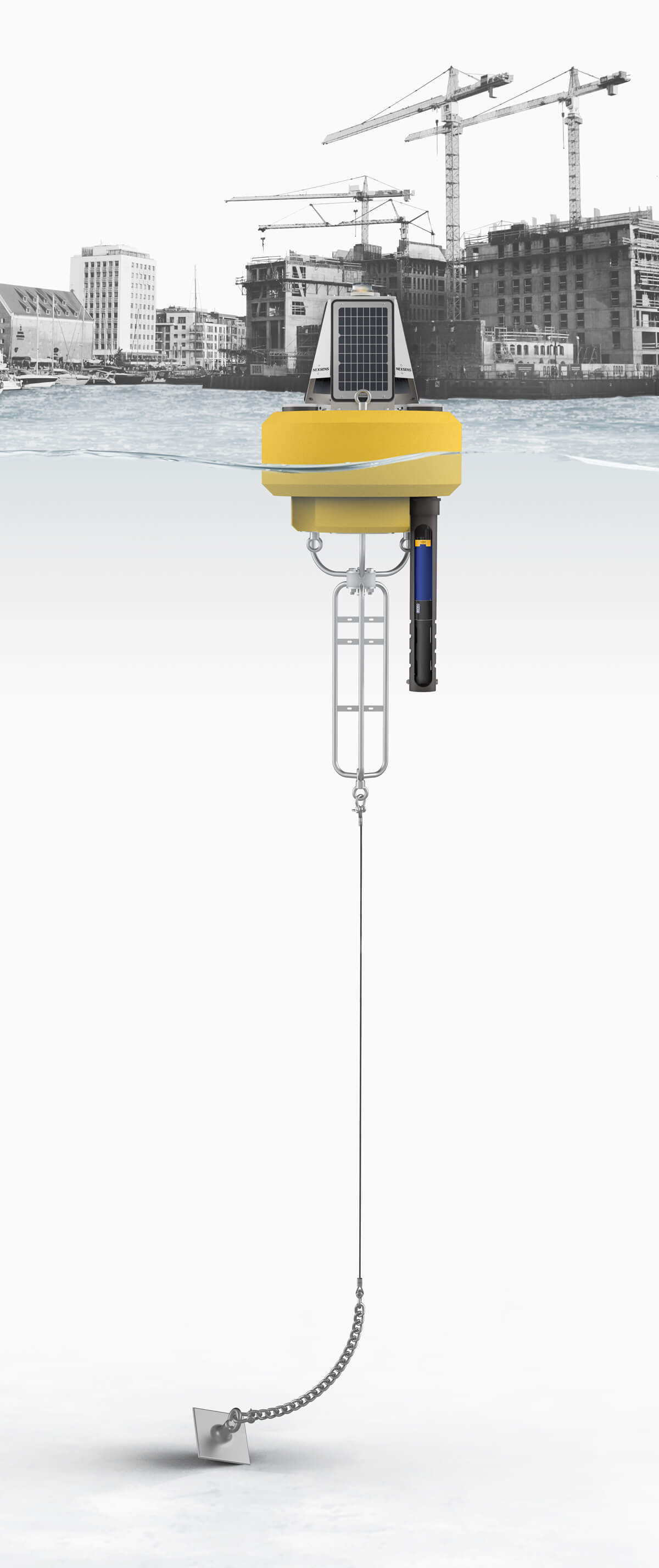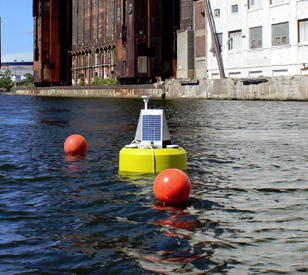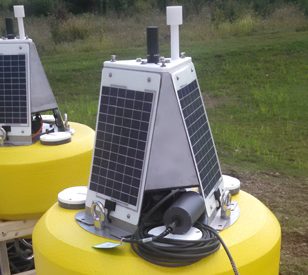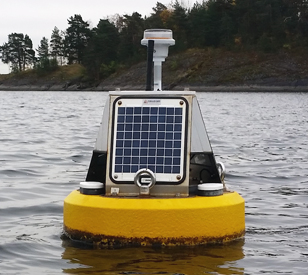Turbidity Monitoring During Construction Operations

Construction projects along lakes, rivers, estuaries, coastal areas and offshore can have an impact on local water quality. Turbidity is often used as an indicator of changes resulting from construction activity, and authorities are increasingly setting requirements for turbidity monitoring on such projects. Real-time turbidity monitoring systems deliver the data necessary to ensure minimal environmental impact.
Construction and Environmental Impacts

Typical Turbidity Monitoring System
A common measure for mitigating the release of sediments and contaminants from construction sites is the installation of barriers called silt curtains or turbidity curtains around the work area. Installation of turbidity sensors just outside the turbidity barrier detects possible escape of sediments from the site and can send alarms to notify project personnel of high turbidity events.
Buoy based systems are most commonly used for installation of turbidity sensors near construction sites. Buoys are easy to deploy and relocate as needed, and flexible mooring options allow for deployment in almost any location.
The NexSens CB-450 buoy is an ideal platform for turbidity monitoring. It is light enough to be deployed from most small boats, yet large enough to provide sufficient power in longer-term applications with its on-board battery and three solar panels. It supports an M550 solar marine light for night-time visibility.
Like all CB-series buoys, the CB-450 supports the NexSens X3 environmental data logger equipped with 4G LTE cellular or Iridium satellite data transmission capability. Real-time data is sent to the WQData LIVE web datacenter, where email or SMS text message alarms are configured to provide notice when critical thresholds are exceeded.
The X3 data logger is compatible with most industry-standard turbidity sensors including those from YSI, Campbell, Eureka, In-situ and others. The logger has multiple sensor ports to accommodate situations where sensors are placed at various depths.
Contact a NexSens Applications Engineer today to discuss your construction turbidity monitoring application.

Case Studies
Buffalo River Dredge Turbidity Monitoring
New York’s Buffalo River has a legacy of industrial contamination, like a lot of other Great Lakes rivers and harbors. But its past of sustaining large influxes of industrial effluent has netted it the distinction of being named a Great Lakes Area of Concern. With its dirty legacy flowing right through their backyard, environmental groups near the river, including the Buffalo Niagara RiverKeeper, began work to bring it back to a viable state.
Read MoreSan Diego Bay Dredging
To clean up environmental contaminants released in its waters going back to the 1960s, the San Diego Regional Water Control Board ordered dredging actions to begin in San Diego Bay in March 2012. The plan of approach was clear: A section of the bay, called the South Site, would be dredged first, and then a second phase of the work would dredge the North Site.
Read MoreKadettangen Beach Construction Project
Not far from Oslo, Norway, a massive effort is underway to expand a public beachfront. The work is taking place along an area of Oslofjord called Kadettangen, a small peninsula that juts out into the bay. Once the work is finished, public officials expect that the new beach area, along with other enhancements planned for the peninsula like bike paths and volleyball courts, will help attract visitors from near and far. So far, project engineers working to expand the beachfront have been trucking in large rocks and boulders from a nearby tunnel construction project.
Read More






